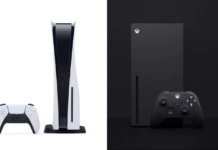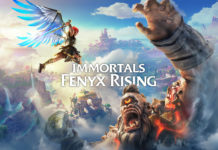Rosy-red tinted glasses won’t even save Nintendo’s Kid Icarus from suffering the effects of Grandfather Time. If Kid Icarus was an aged cheese, it would stink worse than both Limburger and Petite Muenster combined.
What was its cultural impact and/or importance?
At a time when Nintendo could do no wrong, Kid Icarus saw its release in Japan in 1986 and North America in 1987. It combined many elements of popular franchises set before it such as Mario’s platforming, Link’s weapons from The Legend of Zelda and action aspects of Metroid as Pit, the hero, bounced around shooting his arrows. So as a package, it had a little of everything to keep Nintendo fans at bay until the next big release from the core franchises.
Unfortunately, Nintendo ignored the franchise after release for potential follow-ups (not counting the Game Boy iteration). This created an eager response from the diehards who have requested a full-on sequel in any form over the past 24 years. Ridiculous as it sounds, Nintendo has yet to meet the demand of the fans’ desire to play as Pit once again… wait a minute, that’s not ludicrous since one look at Earthbound, Pilot Wings, Kirby, Star Fox, and many others shows that Nintendo isn’t in any hurry to bring their secondary squad in to play.
Remembered more as a title that deserved a sequel rather than a title stood out for its originality, Kid Icarus is a clouded memory rather than a cherished one. It may be best to not go back to the series’ roots as they do not live up to today’s standards.
What areas of gaming did it advance?
Kid Icarus, perhaps, may be the precursor to today’s hybrid titles such as BioShock and Mass Effect. As previously mentioned, it was able merge different genres into one title and did so in a decisive way.
As an upward-scrolling and dungeon crawling title, Kid Icarus employed RPG-esque traits that provided players extra life based on how many enemies they were able to kill. Once enough enemies are killed (or points collected) the health meter will increase. On top of that, there’s an in-game currency (in the form of hearts) that permits players to buy items to assist with completing the levels such as feathers to fly Pit back onto the screen if he falls off a ledge.
With its platforming and action-adventure features, Kid Icarus was an ambitious undertaking that attempted to steer clear of its sister titles (Mario, The Legend of Zelda, Metroid, etc.), but failed in the end. The little to no innovation didn’t help out either.
Does it stand the test of time?
Kid Icarus is an unforgiving game that doesn’t consider the player behind the controller. Due to the conditions that players have to constantly be aware that health won’t be replenished, Kid Icarus is a tedious affair. There comes a point where entertainment should eventually take over and reign over the repetition, but it sadly never happens for Pit and the rest of crew in Kid Icarus.
Yes, the gameplay, at times, is refreshing. But let’s consider that I haven’t even thrown the curveball yet: The graphics are abysmal. The lack of detail, color, enemy diversity, and differentials in animation seriously holds back Kid Icarus from remaining appealing in today’s gaming landscape. With no charm to keep it from falling to the wayside, Kid Icarus is an ugly title by any merits.
In short, Kid Icarus doesn’t stand the test of time and Nintendo either needs to revive the series with a full HD reboot or ignore it in its entirety to keep fans salivating.










